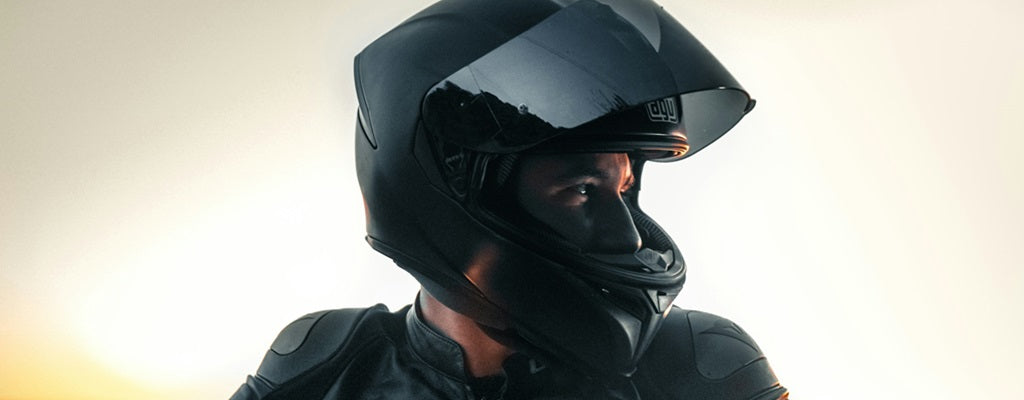
Is it forbidden to wear a balaclava while riding a motorcycle?
Everything you need to know about this riddle: Is it forbidden to wear a balaclava while riding a motorcycle?

CLEARY NOT!
Wearing a balaclava while riding a motorcycle often raises questions about legality and regulations in France. This article aims to clarify the rules surrounding the wearing of a balaclava while riding a motorcycle. 
Understanding the law on face concealment in public spaces
What does the law say about wearing a balaclava while riding a motorcycle? Nothing!
Law n° 2010-1192 of October 11, 2010 in France prohibits the concealment of the face in public spaces, except for specific exceptions. For motorcyclists, this means that wearing a balaclava while riding a motorcycle is not illegal in itself, as long as this equipment does not completely cover the face in a way that prevents identification. A motorcycle balaclava is generally worn for protection against the cold and not to conceal identity, which makes it legal under a helmet that allows the face to be seen. It is essential to understand that the law primarily aims to prevent situations where the face is completely covered, which could constitute an offense under this regulation.
Exceptions to the face concealment rule
There are several exceptions to the rule of face concealment in public spaces. The law allows for covering the face for health reasons, professional necessities, sports activities, or during celebrations and traditions. For motorcyclists, wearing a balaclava under a motorcycle helmet is a common practice to protect against the cold, and as long as the face remains identifiable, this practice does not fall under the prohibition of concealment. Thus, motorcyclists can be reassured knowing that their use of a balaclava in this context complies with the legislation.

Impact of the law on motorcyclists and equipment
The law on face concealment has significant implications for motorcyclists and their choice of equipment. Although wearing a balaclava is generally tolerated, it is crucial that motorcyclists ensure that their face remains visible and partially identifiable. Mandatory equipment, such as an approved motorcycle helmet, must be worn correctly, and any accessory used, such as a balaclava, must comply with road safety rules and not violate regulations on voluntary face concealment.
Differences between wearing a helmet and a balaclava while riding a motorcycle
Wearing a motorcycle helmet is a legal requirement in France for all motorcyclists, as it is essential for the safety of the rider. A helmet protects the head in the event of an accident and helps reduce the risk of serious injury. In contrast, a balaclava is an optional accessory primarily used for comfort and protection against the elements. Unlike a helmet, a balaclava must not completely cover the face in a way that conceals identity, as this could constitute an offense under the face concealment law. Therefore, motorcyclists must ensure that they use these pieces of equipment appropriately to remain compliant with the legislation.
Prohibition of face concealment: what you need to know
The difference between balaclavas and other accessories
It is important to distinguish between different types of accessories such as balaclavas and other face-covering garments. A balaclava for motorcyclists is designed to protect against the elements and is not intended to conceal the face. In contrast, accessories that completely cover the face fall under the law prohibiting face concealment in public spaces. Therefore, motorcyclists must ensure that their balaclava is not interpreted as an accessory intended to conceal their identity.

Concrete examples and anecdotes
To illustrate how the law is applied, here is a concrete example: a motorcyclist wearing a balaclava under his motorcycle helmet was stopped by the police for a routine check. Although the balaclava covered part of his face, the officer exercised discretion by understanding that the intention was not to conceal his identity, but simply to protect against the cold. The motorcyclist was not fined, as he complied with road safety rules and his face remained identifiable. This example shows the importance of the motivation behind wearing a balaclava and highlights the ability of law enforcement to assess the situation reasonably.
Legislation in France compared to other countries
French legislation on face concealment is quite strict compared to other countries. For example, in the United Kingdom, there is no specific legislation on face concealment for motorcyclists, allowing for a freer use of balaclavas and other similar accessories. In comparison, France imposes stricter regulations to ensure public safety and prevent risks associated with anonymity.
Conclusion
In conclusion, although French law on face concealment may seem restrictive, it still allows for common sense and flexibility depending on the circumstances. Law enforcement in France has the ability to exercise discretion when it comes to assessing the motivation behind wearing a balaclava under a motorcycle helmet. For motorcyclists, it is essential to understand the regulations and ensure that their face remains identifiable in order to comply with the legislation while benefiting from the necessary protection against the elements. Adhering to safety rules and being aware of the laws in force helps avoid misunderstandings and ride with peace of mind.






Leave a comment
This site is protected by hCaptcha and the hCaptcha Privacy Policy and Terms of Service apply.